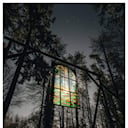Which traditional Spanish dance originated in Andalusia and is recognised by UNESCO as a heritage of humanity?
In the U.S. and elsewhere, flamenco is a pervasive marker of Spanish national identity. For proof of its currency in pop culture, look no further than Toy Story 3: Buzz Lightyear is mistakenly reset in “Spanish mode,” and becomes a passionate Spanish flamenco dancer. Indeed, the world outside Spain often stereotypes the nation as inhabited by flamenco dancers, singers, and guitar players who are so “passionate,” they have little time to engage in the day-to-day-to-day world of the mundane.
Flamenco, which UNESCO recently recognized as part of the World’s Intangible Cultural Heritage, is a complex art form incorporating poetry, singing (cante), guitar playing (toque), dance (baile), polyrhythmic hand-clapping (palmas), and finger snapping (pitos). It often features the call and response known as jaleo, a form of “hell raising,” involving hand clapping, foot stomping, and audiences’ encouraging shouts. Nobody really knows where the term “flamenco” originated, but all agree that the art form began in southern Spain—Andalusia and Murcia—but was also shaped by musicians and performers in the Caribbean, Latin America, and Europe.
Moreover, from the mid-nineteenth century on, flamenco entertainment spread quickly from southern Spain to the capital (Madrid) and onward to other Spanish urban centers, flourishing there as a consequence of the rise of a mass urban culture and increased foreign tourism.
More Info:
www.smithsonianmag.com



